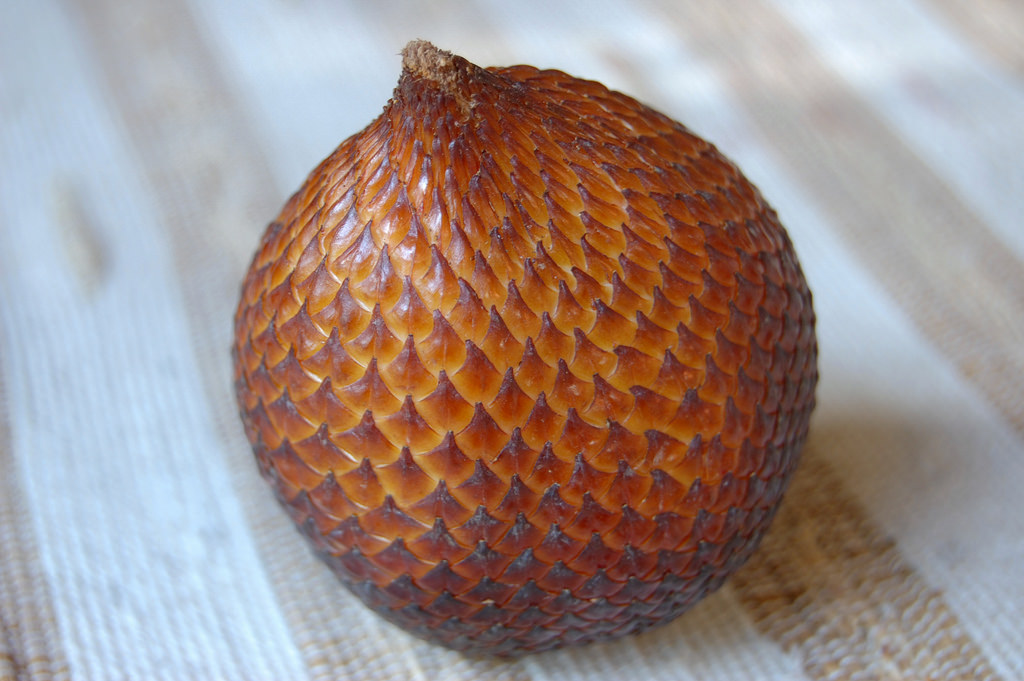Salak, also known as snake fruit, is a species of palm tree, from the family Arecaceae, native to Java and Sumatra in Indonesia. It’s cultivated in other regions as a food crop, and it’s reportedly naturalized in Bali, Lombok, Timor, Malaysia, Maluku and Sulawesi. Take a look below for 23 more fun and fascinating facts about salak.
1. Salak is a very short-stemmed palm, with leaves up to 6 meters, or 20 feet, long. Each leaf has a 2 meter long petiole with spines up to 15 centimeters, or 5.9 inches, long and numerous leaflets.
2. The fruit grows in clusters at the base of the palm due to the reddish-brown scaly skin.
3. Salaks are about the size and shape of a ripe fig, with a distinct tip. The pulp is also edible.
4. Salak can be peeled by pinching the tip, which should cause the skin to slough off so it can be pulled away.
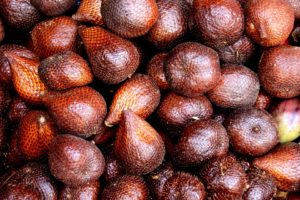
5. The inside of the salak consists of three lobes with the two larger ones, or even all three, containing a large inedible seed.
6. The lobes of the salak resembles, and have the consistency of, large peeled garlic cloves.
7. The salak tastes sweet and acidic, with a strong astringent edge, but its apple-like texture can vary from very dry and crumbly to moist and crunchy.
8. There are at least 30 cultivars of salak, most of which have an astringent taste and are sweet. The two most popular cultivars are “salak pondoh” from Yogyakarta province, and “salak Bali” from Bali Island.
9. In the five years to 1999, the annual production of salak pondoh in Yogyakarta double to 28,666 tons.
10. The popularity of salak pondoh, compared with other cultivars, among local Indonesian consumers is mainly due to the intensity of the fruits aroma and its sweet flavor even before reaching full maturity.
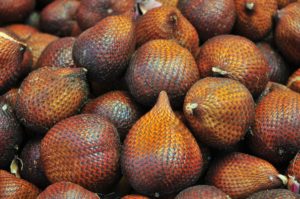
11. Salak pondoh has three more superior variations, namely “pondoh super,” pondoh hitam” and “pondoh gading.”
12. Salak Bali is commonly sold all over the island of Bali, and is a very popular fruit with both locals and tourists.
13. Salak Bali is about the size of a large fig, and has a crunchy and moist consistency. The fruit has a starchy “mouth feel,” and a flavor reminiscent of dilute pineapple and lemon juice.
14. The most expensive cultivar of the salak Bali is the “gula pasir”, or the “sand sugar”, which is smaller than the normal salak and is the sweetest of all salak. The price in Bali is $1.50 to $3.00 per kilogram, depending on the time of year.
15. Salak gula is known for its juicy sweetness which is sometimes fermented into salak wine.
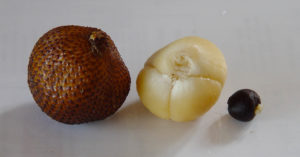
16. There are only 82 calories in a 100 gram serving of salak, which means that it has a low impact on your overall caloric intake.
17. Thanks to the minerals and active ingredients in salak, such as potassium, beta-carotene, and pectin, this fruit is able to increase blood flow to the brain which can boost cognition and improve memory.
18. Studies have found that salak is able to increase stamina and stimulate the metabolism, which can provide a solid boost to a person’s energy levels.
19. There is a high level of dietary fiber in salak, which is ideal for increasing the feeling of fullness and preventing unnecessary snacking and overeating.
20. The potassium found in salak helps lower blood pressure, as potassium is a known vasodilator.
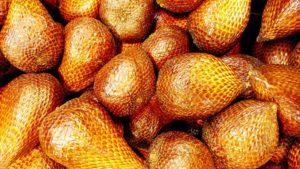
21. Beta-carotene is one of the antioxidants found in salak, which has a direct link to vision health.
22. The high-fiber content of salak makes it excellent for regulating blood sugar levels in a person’s body, which is very important for anyone who’s diabetic.
23. The pineapple-like scent of salak is sometimes used as an aromatic.

